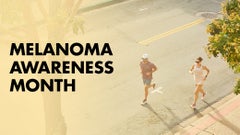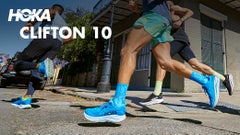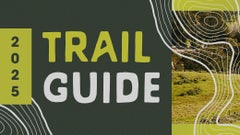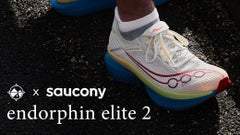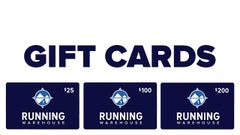The Most Underrated Joint In a Runner's Body
By Alexandra Andersson, D.C.
Updated: December 5, 2024

When it comes to healthy and efficient running form, there are obvious big-picture areas to address: overall balance, core strength, posture, and foot strike, to name a few. One area that is just as important but often overlooked is the mobility of the joints in your feet. Specifically, the mobility of the big toe can have a surprisingly profound effect on your ability to run efficiently and stay injury-free.
A Closer Look at the Big Toe
The first joint of your big toe is called the first metatarsophalangeal joint. Mobility in this joint is crucial to healthy movement and gait, and it has a significant impact not just on the feet but also on the proper activation of the glutes! Its importance really cannot be overstated.
When your big toe lacks the ability to flex upwards, your body finds ways to compensate around it. For a runner, this means compensating right at the push-off point of the gait cycle. This is a very high-stress portion of the gait. Incredibly, when a runner pushes off at the end of each step, the big toes experience six to seven times the force of body weight. This means that when we run, we're experiencing a lot of stress on a very small joint.
So, if we want to avoid repetitive use injury, we must make sure that this joint is working well for us. A functional big toe joint needs a minimum of 30 degrees of upward flexibility, but to be a safe and effective runner, the ideal amount of flexibility is actually around 65 to 75 degrees.

The First Ray
In order for the big toe to work properly, another joint must first be in good working order. And that's the less obvious, extremely underrated first metatarsocuneiform joint, or what we call the first ray. The first ray must be able to move up and down freely, and also have adequate stability. If the first ray can do all of those things, then your big toe can work properly.
However, if your first ray cannot do those things, you can work on your big-toe mobility all day long with no effect. This is because the primary dysfunction is not being resolved. So how do you address the first ray and, as a result, improve the function of the big toe and glutes?
Exercises to Improve First Ray Function
Short Foot
The Short Foot exercise is designed specifically to engage through the arch and stabilize the first ray. To do this exercise, you must first locate your "tripod" the three points of balance through your foot to ensure your body weight is equally distributed (through those three points). For the video tutorial on finding your stable "tripod" position, see our article on Running With Flat Feet or High Arches.
|
• Find your "tripod" position by creating three points of contact with the ground using your heel, the ball of your big toe, and the ball of your pinky toe. • Take the first two points and slide them back toward the heel. • Activate the position by drawing the front of the foot toward the heel. • You should feel a strong contraction in the arch. • You can imagine drawing your foot up like a tent or trying to grasp a marble with the arch of your foot. |
Ankle Dorsiflexion
This exercise will teach you how to properly dorsiflex through the ankle. The ankle dorsiflex is the movement of the foot upwards and closer to the shin. Ankle dorsiflexion is a basic prerequisite for all gaits.
|
• Begin in a half-kneeling position. • Engage a short foot position in the forward foot. • Bring the knee forward over the second toe. • Keep the kneecap straight over the second toe. Your hip, knee, and toe should all be aligned. • Activate the stretch by pulling your toes up toward your knee. • Engage the stretch for 10 to 15 seconds. • Relax the toes and pull the knee further over the second toe. Make sure the heel stays on the ground. • Make sure the hips do not sway to either side and maintain the alignment of your hip, knee, and toe. |
Heel Raises with a Scoop
The Heel Raise with a Scoop is designed to activate and strengthen the posterior tibialis, which is a muscle that lives deep in the calf and controls the rate of pronation, and also helps the first ray to move up and down. Like all of these exercises, this exercise is best done barefoot. You will need a small ball, such as a lacrosse ball, for this exercise.
|
• Begin barefoot and place a small ball between the ankles, below the ankle bone at the heel. • Make sure your feet are facing straight ahead, parallel to each other. • Start by leaning forward and pressing the toes into the ground. • Lift the heels as high as you can while pressing your heels into the ball, scooping your heels inward toward each other. This is what challenges the posterior tibialis and helps control the rate of pronation. • Continuously push off the toes while keeping the entire forefoot on the ground. • Slowly lower back down. • Feel the rotation that is happening at the tibia all the way into the hips. |
For more information on Dr. Andersson and her practice, visit Alta Health and Performance.


